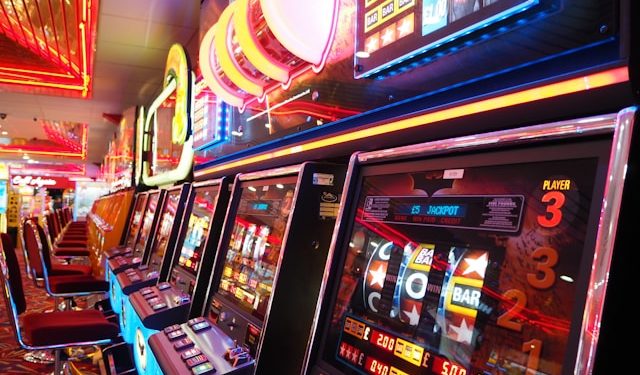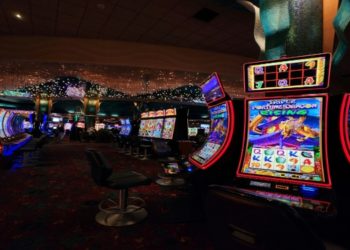Slot gaming may seem like a modern invention because of its dynamic features and interesting themes on online casino platforms. However, its roots go back much further than you might think. There was a time when slot gaming was limited to land-based venues, with no option of playing online. In this context, let’s profile the evolution of slot gaming, from itsearly days until now.
The History of Slot Gaming
For those who play slot games at reputable sites like Bally Bet, it may be surprising that slot gaming has a rich history that can be traced back as far as the 19th century. The first mention of a physical slot machine was the Liberty Bell, invented by Charles Fey in 1895. This was nicknamed the “Fruit Machine” and with three spinning reels and simple symbols like bells and horseshoes, the Liberty Bell was the first device to offer an automated payout system. Players were required to physically pull the lever to match combinations on the reels. In many ways, this original slot machine set the standard for those to come in terms of the design and premise.
One of the major shifts in the evolution of slots came in the 1960s with the introduction of electromechanical slot machines. These slots used electric motors and circuits to make reels and payouts possible. It was a massive upgrade for slots fans as they could explore multiple paylines, faster spins, visual enhancements, and bigger jackpots. While Fey’s original machine relied on gears, levers and springs, these newer slots marked a significant turning point with modern electronics creating a more engaging slot experience.
The late 1970s brought about yet another transformative period in the world of slot machines with the advent of video slots. First developed by Fortune Coin Company in 1976, these machines used a screen instead of physical reels. A random number generator (RNG) was used to determine the results, which made it possible to include more reels, better graphics, and bonus rounds. Without the limits of physical elements, video slots could offer more exciting themes and new ways to play that would shape the future of slot machines.
With the appearance of the internet in the 1990s, slot machines became digital, allowing players to engage in slots on their screens. This was revolutionary at the time, as slots fans could play their favourite games without having to travel to a brick-and-mortar casino or adhere to a strict dress code. These online slots had interesting new features such as progressive jackpots, free spins and mini-games. Graphics were also steadily improving,and players had the choice of playing slots with creative themes at the touch of a button, anytime they wanted to.
After the 2010s, slot games became available on mobile devices, with players able to play on the go on their smartphones in between running errands or during their leisure time. More recently, modern technologies such as virtual reality, augmented reality and artificial intelligence have helped to create fully immersive 3D casino worlds where players can interact with the environment.
The Impact of Online Slots
Online slots have made playing much easier by letting people enjoy their favourite games without going to a casino. With so many options online, players can choose from hundreds of slot games with different themes, features and payout styles. For example, those who enjoy the simplicity of the classic fruit machine can play classic slot games online, or they can engage in interesting variations such as Slingo. Modern online slots platforms also have chat features and rooms, allowing you to connect with like-minded people in different parts of the world.
Technological developments have also spurred the growth of the slot gaming industry. The games became even faster and simpler to play, loading instantly and allowing us to play demo versions as well as skip from one slot to the next easily. VR and AR have made live casino experiences possible, which has bridged the gap between real-life casino venues and their online counterparts. Artificial intelligence has also helped to create a more personalised experience, with data being collected on players’ behaviour to offer individualised gaming recommendations. These advances have attracted a wider and more diverse audience worldwide.
Final Thoughts
Ultimately, the journey of slot gaming has been one of reinvention. From the original Liberty Bell in 1895 to the modern slots we know today, slot gaming is in a state of constant flux. The transition from mechanical to digital slots introduced new gameplay mechanics, while online slots revolutionised accessibility and innovation. Nowadays, slot gaming is an immersive experience with modern technology such as AR, VR and AI creating an authentic gaming session. Slot gaming will likely change even more in the coming years, catering to player demand.













































































